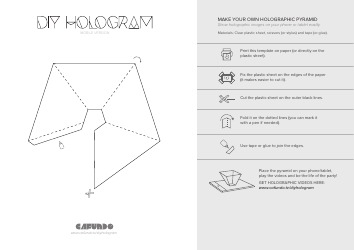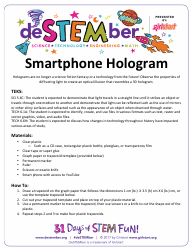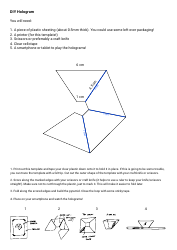Hologram Template
A hologram template is used for creating and designing holograms. Holograms are three-dimensional images produced from a two-dimensional surface. They have diverse uses including in security features on credit cards, passports and other important documents to prevent counterfeiting and fraud, in scientific and technical research, and in art and entertainment. The template serves as a base design that can be customized according to the specific needs and is used with a hologram printing machine.
The hologram template is typically filed and maintained by the company or organization that owns the image. This could be an entertainment company, a software developer, a technology company, or any other entity that uses holographic technology for their products or services. They could file it with the relevant patent and copyright offices, such as the United States Patent and Trademark Office (USPTO), or the Canadian Intellectual Property Office (CIPO), to protect their designs. These documents confirm the ownership, define rights and protect against unauthorized use. They hold key details about the structure, design, and use of the hologram, which is considered proprietary information.
FAQ
Q: What is a hologram template?
A: A hologram template is a pattern or model used as a guide for creating a three-dimensional image or hologram. It is commonly used in technology and entertainment fields to produce holographic images for various purposes, such as presentations, exhibitions, and performances.
Q: How do holograms work?
A: Holography is a technique that allows light scattered from an object to be recorded and later reconstructed so that it appears as if the object is in the same position relative to the recording medium as it was when recorded. The hologram itself is not an image and it is useless when viewed under diffuse ambient light. It is an encoding of the light field as an interference pattern of variations in the opacity, density, or surface profile of the photographic medium.
Q: Are holograms real images?
A: Yes, a hologram can create a real image that can be viewed from various angles, giving the illusion of a three-dimensional object. However, the object is a light projection and not material, meaning you can't touch it, but you can see it as if it were a real, tangible item.
Q: Are there any practical applications of hologram technology?
A: Yes, hologram technology has numerous practical applications across different fields. For instance, in healthcare, holograms can be used to visualize complex medical conditions or procedures. In entertainment, they are commonly implemented in augmented and virtual reality experiences. Holograms are also used in security measures on credit cards and driver's licenses.
Q: Can holograms be on paper?
A: Yes, holograms can be printed on paper; this is sometimes referred to as holographic printing. This technique is often used to create decorative and security labels for product packaging or identification cards to counter forgery.
Q: Can holograms be used for video calls?
A: The technology is advancing rapidly towards realizing real-time holographic video calls, although it is not yet widely available. Companies are developing prototypes and conducting tests to introduce this technology for regular use in the coming years.













